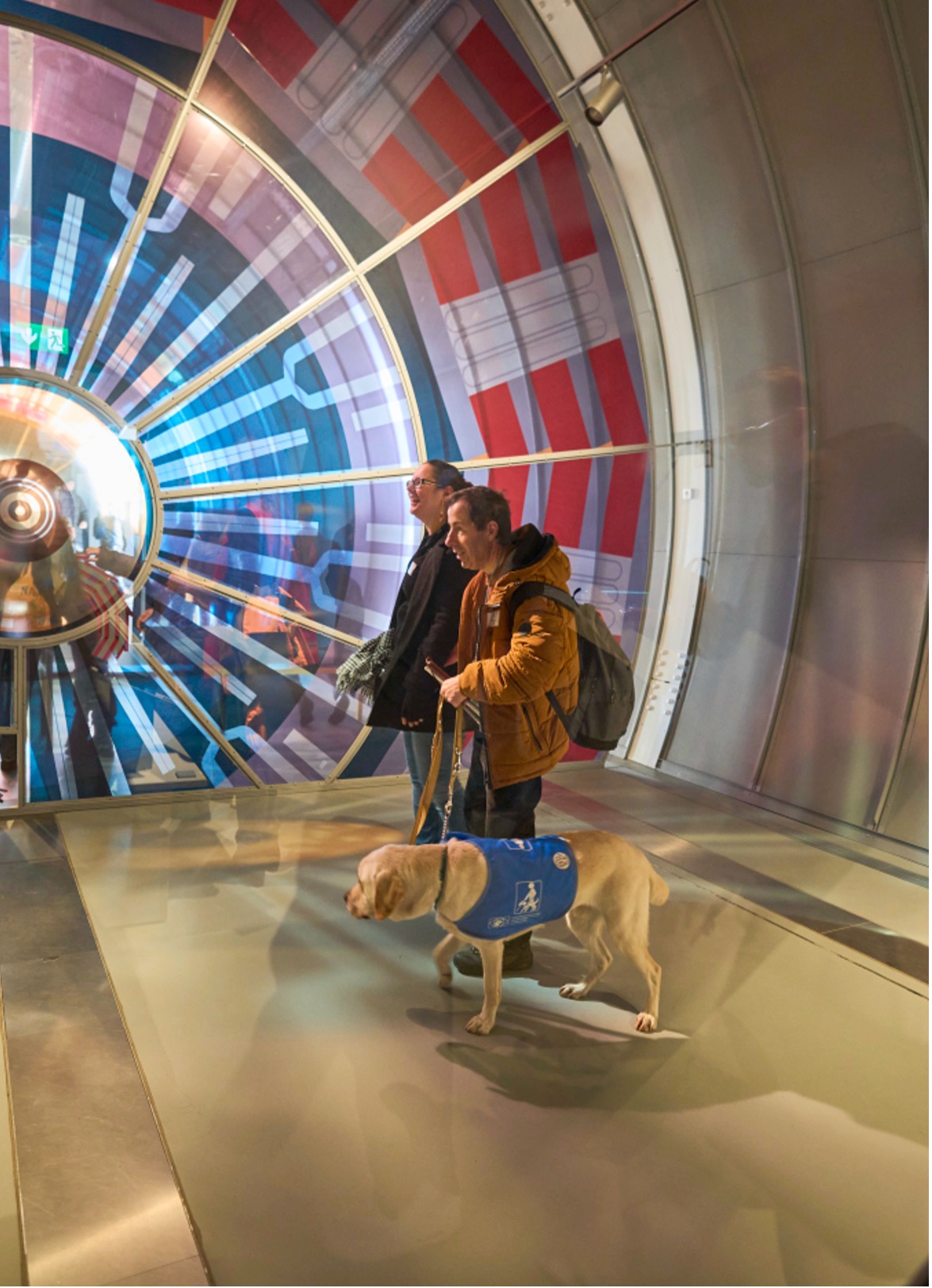
Since opening in October, CERN Science Gateway has welcomed almost 100 000 visitors. Among these was a group of around 50 people from the Association pour le Bien des Aveugles et malvoyants (ABA), the reference association in Geneva for blind and visually impaired people, who toured the exhibitions on 28 November. ABA has worked with the CERN exhibitions team since 2019 and this was the chance for its members, including some visually impaired members, to see the fruit of this collaboration.
At the event, Emma Sanders, head of the CERN exhibitions team, and Bernard Jost, ABA’s accessibility project manager, explained how they had developed the exhibitions with accessibility and inclusivity at the forefront.
“We learnt very early on that making content more accessible usually benefits more than one kind of audience group,” Emma explained. “Tactile content is great for people who are blind or who have visual impairments, but it is also appreciated by many children. Wheel-chair accessible furniture is also good for parents pushing kids in buggies.”
“The idea came from CERN,” says Jost. “While the law requires cultural sites in Geneva to be as accessible as possible, what’s praiseworthy about CERN Science Gateway is that they made a point of taking accessibility into account from the beginning. We haven't created a parallel accessible exhibition: it's the same exhibition with some additional accessible features.”

The permanent Science Gateway exhibitions comprise three parts: Discover CERN, Our Universe and Quantum World. Many installations incorporate an audio description and many also include tactile features, where visitors can touch and explore to interpret the content for themselves.
“One of the exhibitions that impressed me the most was Discover CERN, where I was able to go around the tunnel that the particles pass through and, thanks to the guide's description, experience the entire journey they take. It was impressive,” says Anne Gaugaz, one of the ABA visitors with visual impairments. “I also liked, in Back to the Big Bang, being able to touch the planets of the solar system that were in relief. That helped me to understand how big they were.”

“Thanks to the guided tour, I enjoyed my visit to the Science Gateway exhibitions, in particular the accelerator exhibition and the part that takes us back in time to the Big Bang. It was very interesting and informative,” says Bertram Paul, a blind member of the ABA group who also worked with the exhibitions team to advise on the audio descriptions.
While the visit in November was a success, there is still work to be done. “Of course, it’s an evolving process,” Jost continues. “Some more alterations need to be made, so we will keep in touch.”
Content designed for people with visual impairments is just one aspect of Science Gateway’s effort to be accessible to all. And to complement the exhibitions, there is now a new CERN guides course focusing on accessibility, which is run by another local group, Culture Accessible. Visit this link to find out how you can become a Science Gateway guide.
For colleagues across CERN who are interested in making their work more accessible, the exhibitions team can share more about the process. As Emma recommends, “It’s always easier to ensure accessibility when you build it in from the start of your project. Working together with the community is essential: it brings creative and sometimes unexpected solutions that often work better for everyone.”
